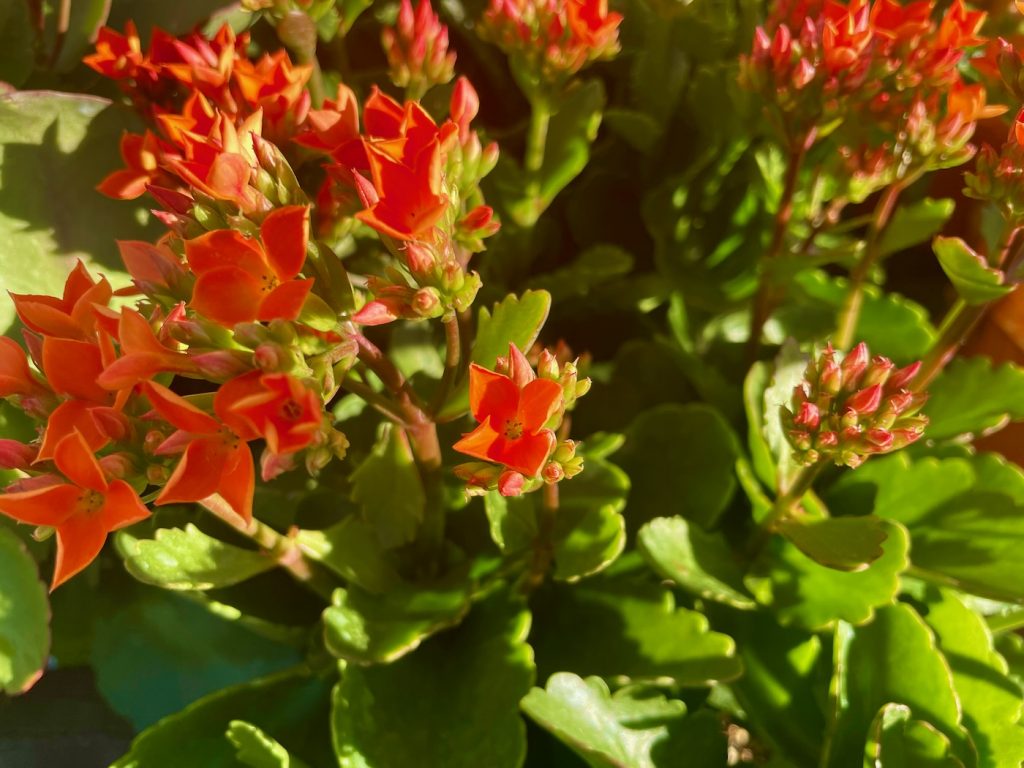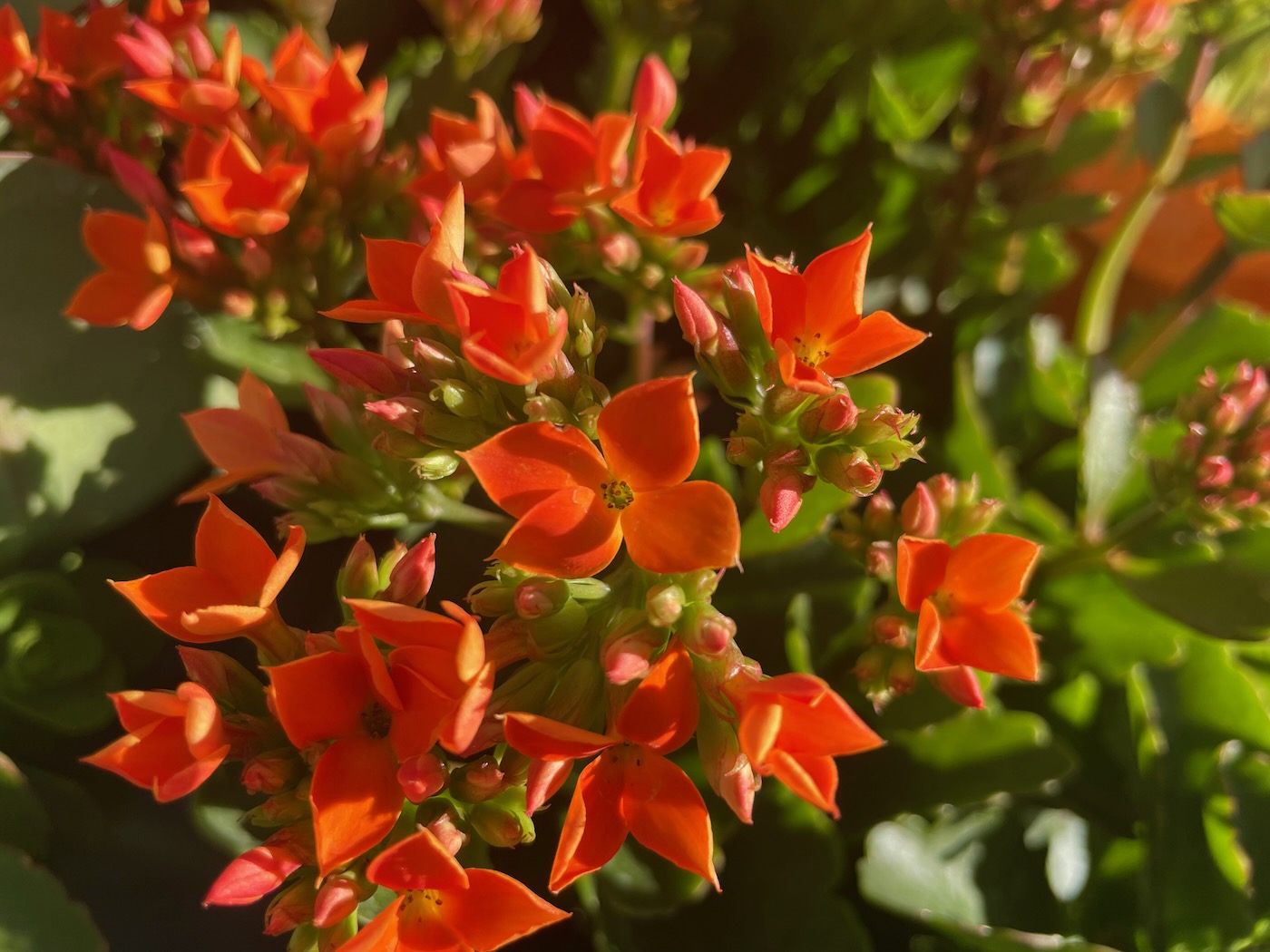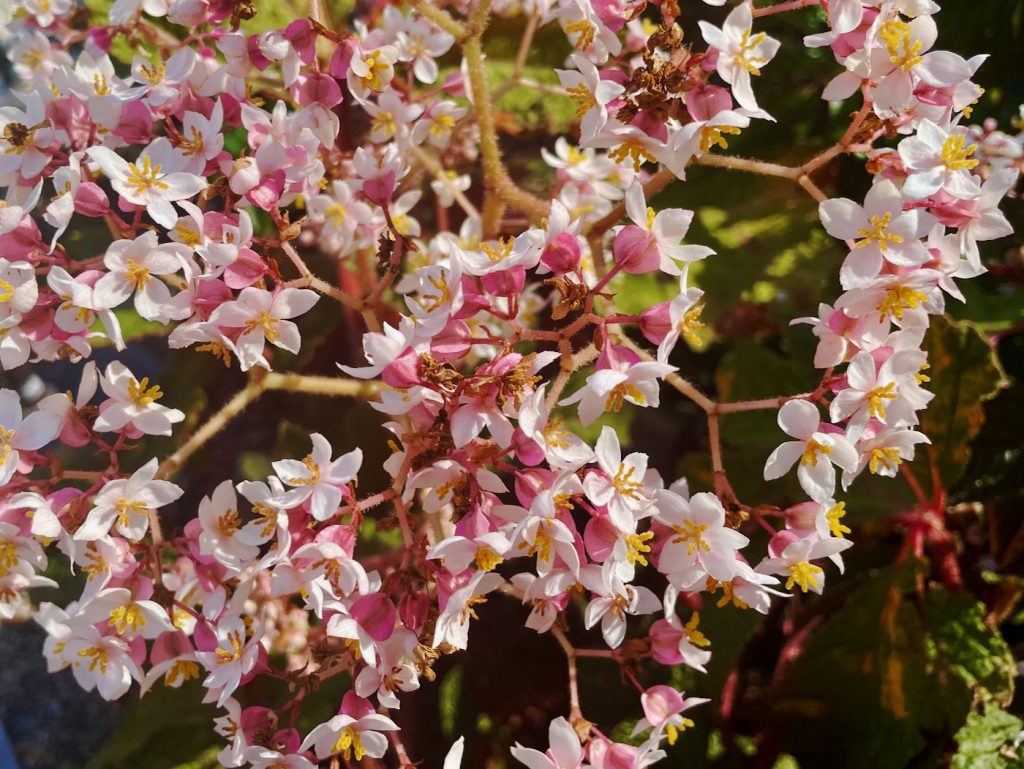Kalanchoe ‘Single Orange’: The Vibrant Houseplant from the Crassulaceae Family
Kalanchoe ‘Single Orange’ or Kalanchoe blossfeldiana ‘Single Orange’ commonly known as Flaming Kalanchoe or Florist Kalanchoe, is a captivating member of the Crassulaceae family, revered for its striking presence in indoor containers or baskets. With scalloped glossy leaves that elegantly complement clusters of lovely orange blooms, this houseplant serves as an easily cultivated and eye-catching addition to indoor spaces.
Features & Attributes of Kalanchoe ‘Single Orange’
This Kalanchoe variety adorns itself with stunning clusters of orange, trumpet-shaped flowers that grace its foliage from mid-winter to early spring. Its succulent round leaves maintain a deep green hue throughout the year, adding an evergreen appeal to indoor environments.
Planting & Growth Conditions
When cultivated indoors, Kalanchoe ‘Single Orange’ typically reaches a height of about 8 inches at maturity, extending to 12 inches tall with the flowers, and possesses a spread of 12 inches. With optimal care, it can thrive for approximately 10 years, showcasing a mounded form that may occasionally benefit from minor pruning to retain its best appearance.
Light Preferences
This houseplant flourishes in environments receiving either direct or indirect sunlight. It generally requires a brighter setting than what artificial indoor lighting alone can provide.
Soil and Watering Practices
Adaptable to both dry and moist soil, Kalanchoe ‘Single Orange’ thrives under average home conditions, requiring regular but not excessive watering. It’s crucial to maintain a slightly moist soil surface, necessitating watering once or possibly twice weekly. Adjust watering schedules based on environmental factors and specific plant conditions, ensuring adequate moisture without waterlogging. Sandy soil with good drainage is preferred, and seeking recommendations for pre-mixed potting soil from experts is advisable.
Flowering and Care Requirements
To encourage flowering, providing a ‘rest period’ of shorter days and longer nights is essential. Limiting daylight exposure to eight or nine hours daily for at least a month, alongside reduced watering, mimics the plant’s natural bloom cycle, resulting in buds appearing approximately two months later. Additionally, these soft succulents require excellent drainage and infrequent watering to prevent root rot.
Maintenance and Propagation Tips
Kalanchoes are generally low-maintenance plants. Overwatering should be avoided, and regular feeding once a month during spring and summer can sustain their health. Propagation is easily achieved through stem or leaf cuttings, provided the cuttings are allowed to dry before planting in appropriate soil conditions.
Troubleshooting Common Issues
Brown patches on leaves indicate possible sunburn, requiring relocation to a shaded area. The reddish coloration on leaves due to sunlight exposure is natural, but if accompanied by signs of sunburn, moving the plant to a different location is advised. Wilting may be due to temperature variations, so relocating the plant to a warmer, draft-free space can help. Stem rot, a consequence of overwatering, requires immediate action to prevent further damage, involving the removal of affected areas and allowing the soil to dry out before rewatering.
Conclusion
Kalanchoe blossfeldiana ‘Single Orange’ stands out as a vibrant and adaptable houseplant offering an array of stunning orange blooms and glossy foliage. Its resilience, ease of care, and ability to flourish in indoor settings for an extended period make it a favored choice among plant enthusiasts. By adhering to the suggested care practices and troubleshooting common issues, this captivating Kalanchoe variety can brighten and enliven indoor spaces while serving as an attractive and low-maintenance addition to indoor collections.





